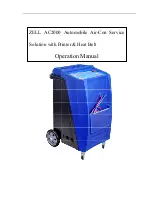
22
Introduction: Control Reference Guide
Control Reference Guide
1.
POWER switch (
|
/
M
)
Turns the power on and off.
Set the switch to “|” to turn it on.
2.
REMOTE button (REMOTE indicator)
REMOTE button
Press to enable control of this unit from an external
device.
MODE (SHIFT+REMOTE) button
Press the MODE and SHIFT buttons simultaneously,
and the mode selection screen appears on the display
panel.
Select the USB device mode to connect the unit to a
PC, the LAN mode to use the unit as a network server,
the browser mode, or the AVCHD mode (available only
when an optional board is installed).
➝
Refer to “Using USB or eSATA Connectors” (page
124)
➝
Refer to “Connecting This Unit to a Network” (page
139)
➝
Refer to “Operating the AVCHD Thumbnail Screens”
(page 161)
3.
Mode indicators
A lamp corresponding to the currently selected mode
lights up.
4.
TCG switch
Audio and Video Controller
1 2
3
4
6
5
7
8
9 10
11 12
25 27
23
22 24
26
17
19
16
18
21
20
15
14
13
REMOTE
button is on:
This unit can be controlled via the 9-
pin remote, RS-232C, parallel
connector, or camera recorder.
INT
REGEN:
Synchronizes the internal time code
generator with the time code read from the
P2 card.
Use setup menu No. 505 (TCG REGEN) to
select whether to make TC or UB the
REGEN.
INT
PRESET:
Uses the internal time code generator of
this unit. Settings can be preset on the
operation panel and the remote control.
➝
Refer to “Time Code, User Bit and CTL”
(page 205)
















































